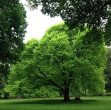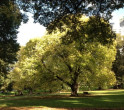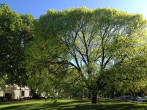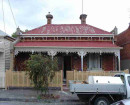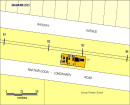TREASURY GARDENS
SPRING STREET AND WELLINGTON PARADE MELBOURNE, MELBOURNE CITY
-
Add to tour
You must log in to do that.
-
Share
-
Shortlist place
You must log in to do that.
- Download report
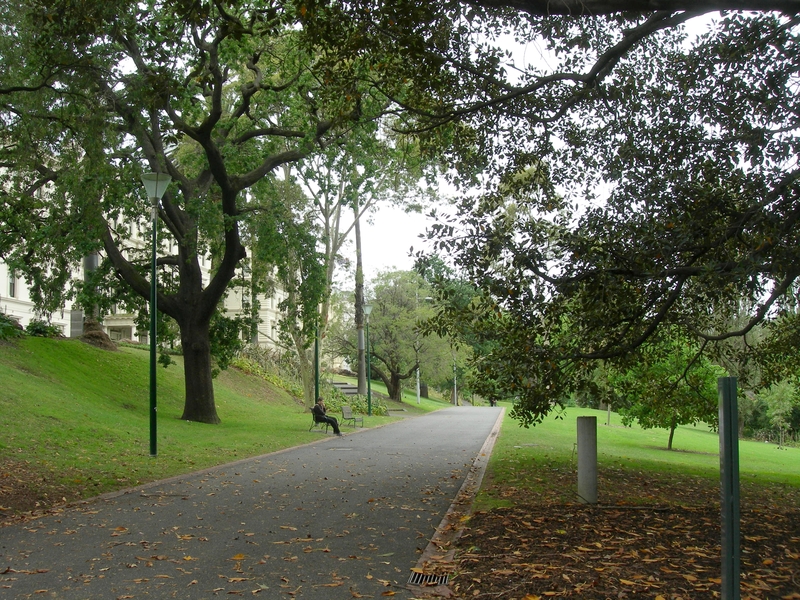

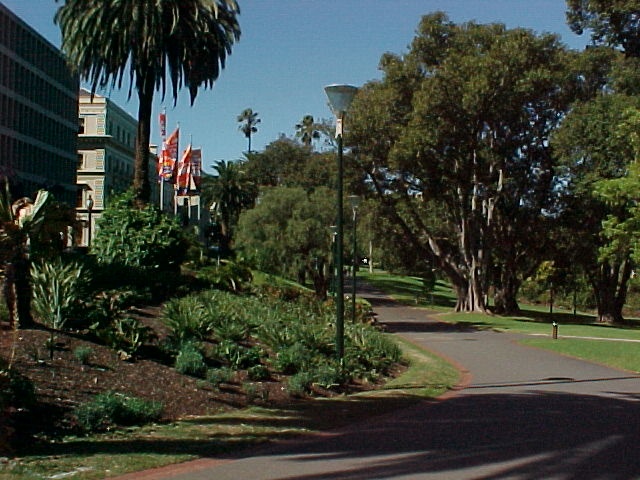
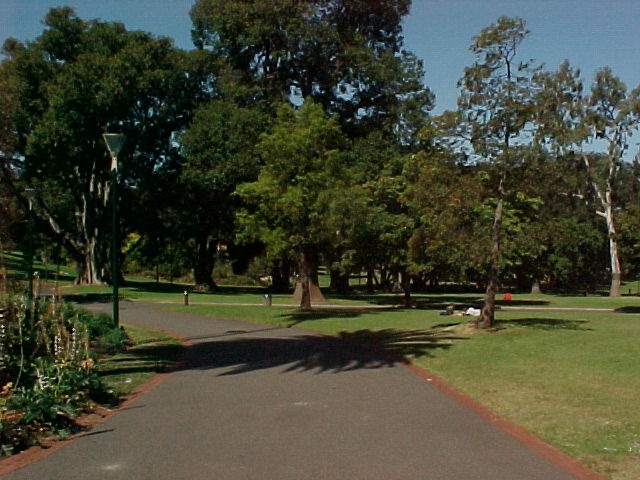
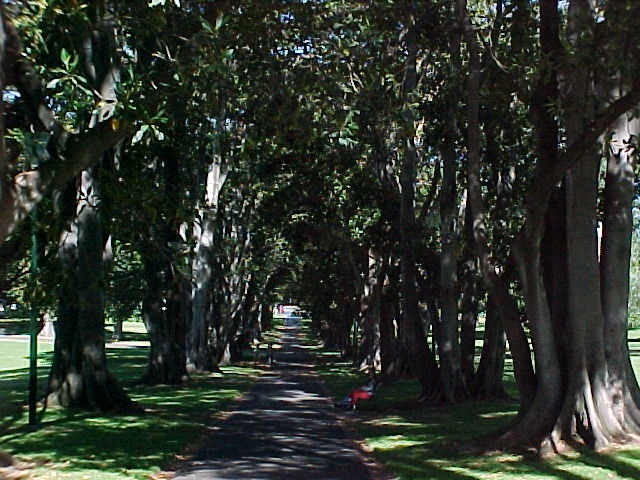
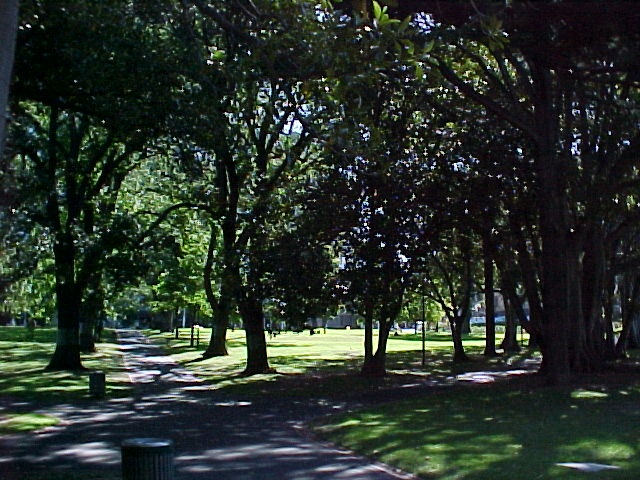
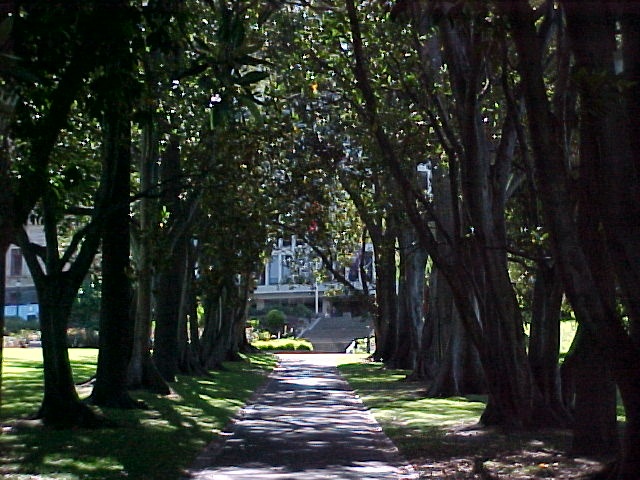
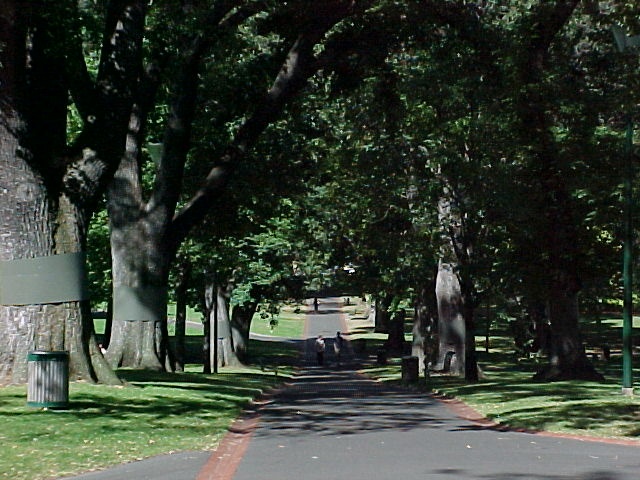
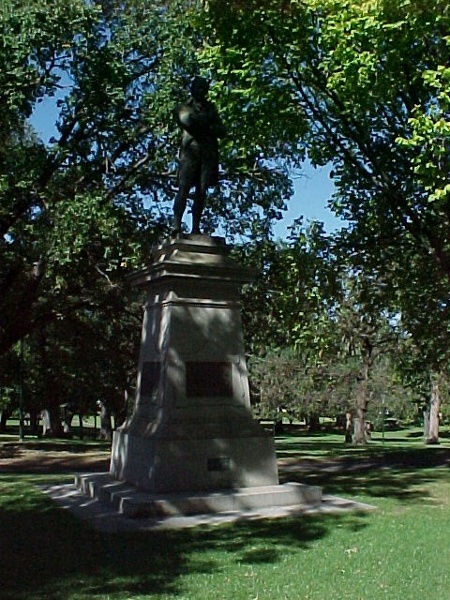

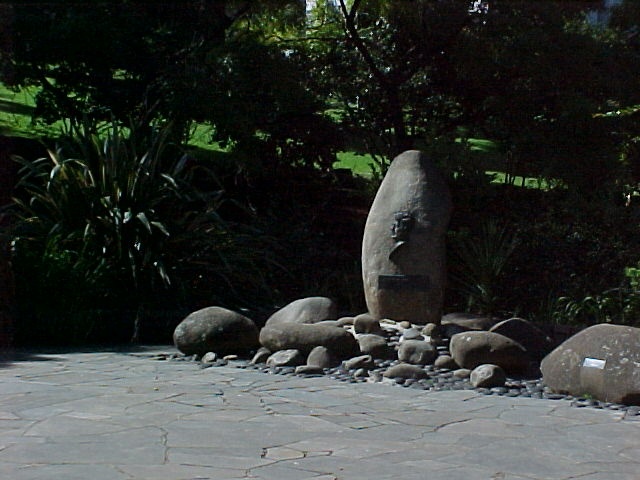
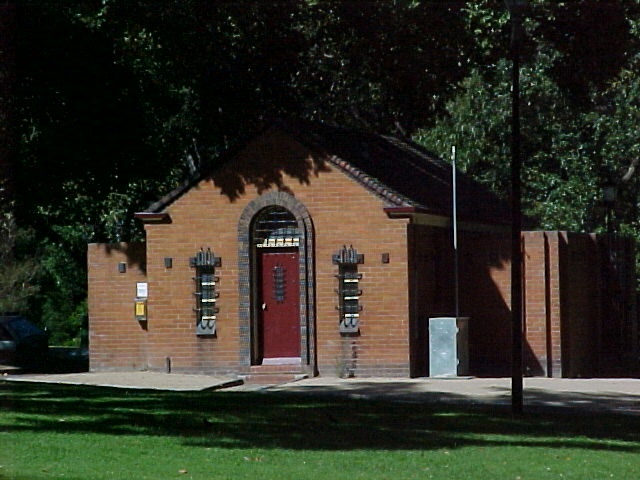
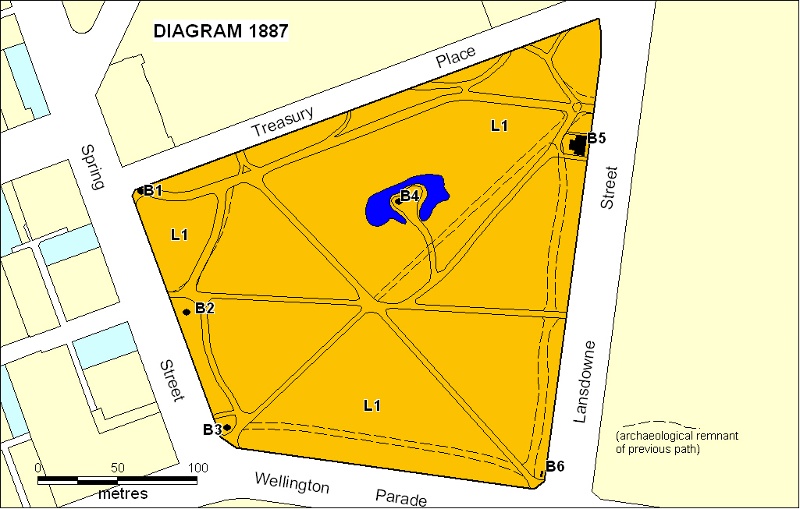
Statement of Significance
What is significant?
The Treasury Gardens comprises 5.8 hectares (14 acres) and was originally part of the 8.7 hectrares (21 acres) Treasury Reserve . The gardens were developed to a design prepared by Clement Hodgkinson, Assistant Commissioner of the Lands and Survey Department in 1867. The surviving plan shows crossing and perimeter paths lined with trees and a list of species to be planted, many of which remain today. In 1902, the Sir William Clarke statue designed by Bertram Mackennal, was unveiled by the Governor of Victoria. In the same year William Guilfoyle, Director of the Melbourne Botanic Gardens, was responsible for designing a Japanese Garden around the lake, and in 1907 he provided further recommendations on the care of the gardens. In 1929 the City of Melbourne took over the management of the Gardens from the Lands Department and commenced a program of works including the removal of a row of Moreton Bay Figs along Wellington Parade and their replacement with Australian natives. In the 1950s the path parallel to Lansdowne Street was removed and as late as1996 the path along Wellington Street was removed. Only archaeological remnants of these paths remain. In 1934 the Treasury Gardens was used by the community to celebrate Victoria's centenary and in 1939 it was the venue for a floral festival when the art deco brick toilet block was constructed. The Gardens continue to be used for community events and rallies. In 1963 a monument was erected to the American President, John F Kennedy.
How is it significant?
Treasury Gardens is of historic, aesthetic, scientific (horticultural), archaeological, architectural and social importance to the State of Victoria.
Why is it significant?
Treasury Gardens is historically important as one of Victoria's oldest public gardens dating from the mid nineteenth century and laid out from 1867 to a design prepared by Clement Hodgkinson. The Treasury Gardens, and Fitzroy Gardens, are the finest examples of his garden designs in Victoria. The later involvement of the important garden designer, William Guilfoyle, Director of the Melbourne Botanic Gardens is also important. The statue to Sir William Clarke, Victorian pioneer and philanthropist, and the relocated Robert Burns statue are significant sculptures. The assassination of the American President, John F Kennedy in 1963 resulted in world-wide condemnation and the monument acknowledges this important event.
The Treasury Gardens is of aesthetic significance, featuring mature stands of trees planted as avenues along the crossing paths, and forming a 'cathedral' or 'tunnel' effect. The contrasting evergreen foliage of conifers, palms and Moreton Bay Figs against a background of deciduous elms, oaks, plane and poplars is a prominent landscape feature. The contrasting colours and trees forms are dramatic and outstanding in autumn. The rock edging and Hedera helix borders are fine examples of this form of garden design. The gardens form an integral component of the Spring Street government buildings precinct.
The Treasury Gardens is of aesthetic and scientific (horticultural) importance for its outstanding nineteenth century design, path layout and planting. The avenue of Ficus macrophylla, is the finest planting of this type in Victoria. The avenues, rows and specimen trees of Ulmus procera, and Ulmus x hollandica, throughout the Gardens are significant trees, forming part of the most important collection of elms in Australia. The rare small-leaved Ulmus x hollandica is of horticultural importance. Other notable trees are: Ficus rubiginosa, Cedrus deodara, 3 Populus alba, Araucaria heterophylla, and the collection of palms, Phoenix canariensis, Washingtonia robusta, Butia capitata, andChamaerops humilis. The remnant Eucalyptus camaldulensis is of scientific value as the last remaining example of the original flora.
Treasury Gardens is socially important as a venue for many important community events, open air concerts, and political and union rallies. Attempts to construct car parks, rail station and other facilities have been strongly opposed by the community and State governments.
Treasury Gardens is of archaeological importance, not only for the remnants of earlier landscaping, but also as a relatively undisturbed tract of land in inner Melbourne, for its potential to reveal archaeological evidence from earlier periods in Victorian history.
The toilet block built in 1939 for the Spring Carnival and floral festival is of architectural importance for its uncommon art deco design, decorative pattern brick and tile construction and extensive use of wrought iron detailing, including grills, gates, lamps, signs and brick planter, exhibiting outstanding craftsmanship.
-
-
TREASURY GARDENS - History
CONTEXTUAL HISTORY:
In 1842, a year after the Melbourne Town Council's inauguration, land adjacent to the rapidly expanding town centre was being set aside by the Superintendent of the Port Phillip District Charles Joseph La Trobe, as areas for 'the public advantage and recreation'. This was in response to citizen requests and council recommendations. Fortunately it was La Trobe's vision that 'a society not wholly dominated by commercial interests, but which encouraged and provided for social, educational and religious concerns' was to be developed in Melbourne ( Georgina Whitehead, Civilising the City: A History of Melbourne's Public Gardens. 1997, p. 3). The council supported this notion and stated that it was of 'vital importance to the health of the inhabitants that there should be parks within a distance of the town' (Georgina Whitehead, A History of the Fitzroy Gardens. March 1993, p. 3)Other city parks established at the same time are the Flagstaff Gardens, Treasury Gardens, Carlton Gardens and the Domain.
Fitzroy Gardens exhibits a rich layering of history, a mosaic of landscaping styles influenced by the park's numerous curators and gardeners, public opinion, practicality and landscaping fashions. The garden's history may be divided into several periods distinguished by the appointed designers, curators and gardeners.
Clement Hodgkinson - Designer and Curator 1858-1874
Clement Hodgkinson was the Assistant Commissioner for the Department of Crown Lands and Survey, also the administrator responsible for Fitzroy Gardens. He abandoned Bateman's design for his own, a more utilitarian plan that consisted of a network of paths that directly linked important streets providing short routes through the park (Whitehead, 1993, p. 8) Subtle curves in the pathways achieved a naturalistic effect with an overall aesthetic symmetry.
Hodgkinson's chose trees for practicality rather than style, '...the chief desiderata were shade along the numerous paths therein forming important lines of traffic, and such dense and continuous masses of foliage as would tend to check the inroad of dust from adjacent streets. Consequently in such reserves, strict adherence to the rules of landscape gardening , with regard to the grouping of tree, ".c., had to be abandoned in favour of the formal lining of the paths with rows of umbrageous trees, and the planting in the background of dense masses of conifers, evergreen shrubs, fern trees ..." (Swanson, 1984, p 26). Hodgkinson's personal commitment, dedication and interest dictated the gardens development (Whitehead, 1997, p10). The result of his selection of trees and garden ornamentation, was a Italian Renaissance styled garden.John Guilfoyle - Curator 1891-1909
John Guilfoyle had been working under Bickford for several years. He was attributed with the expansion of the nursery, increasing the production of shrubs and foliage plants (ibid., p. 18). He came from a family with a background in gardening, his brother William Guilfoyle renowned for his work at the Melbourne Botanic Garden. The Metropolitan Parks and Gardens Committee employed John Guilfoyle as the new curator, mainly for his knowledge of current decorative gardening fashions.nal setting. Guilfoyle's experimental removal of the iron railing that fenced the lawns and flower beds proved popular with the public and subsequently not returned. He constructed flower beds in various shapes, eg. a map of Australia, and this too became popular along with ribbon planting and carpet bedding. Other initiatives included theGuilfoyle died at the curator's cottage at Carlton Gardens in 1909. He approach his work in a professional manner, introducing plants to the garden from overseas, specifically selected to suit the climate and soil conditions of Melbourne. The ribbon planting that was popular and fashionable during this period still decorates Hotham Walk today. In fact this is the most elaborate example still maintained in Victoria as much of this style was abandoned when it went 'out of fashion' (Watts, 1983, Historic Gardens of Victoria: A Reconnaissance, Oxford University Press, Melbourne, p165)
TREASURY GARDENS - Permit Exemptions
General Exemptions:General exemptions apply to all places and objects included in the Victorian Heritage Register (VHR). General exemptions have been designed to allow everyday activities, maintenance and changes to your property, which don’t harm its cultural heritage significance, to proceed without the need to obtain approvals under the Heritage Act 2017.Places of worship: In some circumstances, you can alter a place of worship to accommodate religious practices without a permit, but you must notify the Executive Director of Heritage Victoria before you start the works or activities at least 20 business days before the works or activities are to commence.Subdivision/consolidation: Permit exemptions exist for some subdivisions and consolidations. If the subdivision or consolidation is in accordance with a planning permit granted under Part 4 of the Planning and Environment Act 1987 and the application for the planning permit was referred to the Executive Director of Heritage Victoria as a determining referral authority, a permit is not required.Specific exemptions may also apply to your registered place or object. If applicable, these are listed below. Specific exemptions are tailored to the conservation and management needs of an individual registered place or object and set out works and activities that are exempt from the requirements of a permit. Specific exemptions prevail if they conflict with general exemptions. Find out more about heritage permit exemptions here.Specific Exemptions:General Conditions: 1. All exempted alterations are to be planned and carried out in a manner which prevents damage to the fabric of the registered place or object.General Conditions: 2. Should it become apparent during further inspection or the carrying out of alterations that original or previously hidden or inaccessible details of the place or object are revealed which relate to the significance of the place or object, then the exemption covering such alteration shall cease and the Executive Director shall be notified as soon as possible.General Conditions: 3. If there is a conservation policy and plan approved by the Executive Director, all works shall be in accordance with it.General Conditions: 4. Nothing in this declaration prevents the Executive Director from amending or rescinding all or any of the permit exemptions.General Conditions: 5. Nothing in this declaration exempts owners or their agents from the responsibility to seek relevant planning or building permits from the responsible authority where applicable.Building Exterior:
* Minor repairs and maintenance which replace like with like.
* Painting of previously painted walls, eaves, and roofing in the same colour.
* Treatments to stabilise and protect timber, masonry and metal structures.
Building Interior:
* Painting of previously painted walls and ceilings provided that preparation or painting does not remove evidence of the original paint or other decorative scheme.
* Removal of paint from originally unpainted or oiled joinery, doors, architraves, skirtings and decorative strapping.
* Installation, removal or replacement of electrical wiring provided that all new wiring is fully concealed and any original light switches, pull cords, push buttons or power outlets are retained in-situ. Note: if wiring original to the place was carried in timber conduits then the conduits should remain in-situ.
* Refurbishment of existing toilet building, including installation or replacement of sanitary fixtures and associated plumbing, and works for health and safety requirements.
* Installation of security devices and smoke detectors.
Landscape:
* The process of gardening, mowing, hedge clipping, bedding displays, removal of dead plants, disease and weed control, emergency and safety works, and landscaping in accordance with the original concept.
* The replanting of plant species to conserve the landscape character, Moreton Bay Fig and Elm avenues and the stand of palms.
* Management of trees in accordance with Australian Standard; Pruning of amenity trees AS 4373.
* Vegetation protection and management of the possum population.
* Repairs, conservation and maintenance to hard landscape elements, statues, monuments, fountains and water features, slate paving and walls, asphalt paths, rock edging, bins, lamps and seats.
* Installation, removal or replacement of garden watering and drainage systems beyond the canopy edge of listed trees.
* Removal of plants listed as State Prohibited and Regionally Controlled Weeds in the Catchment and Land Protection Act 1994.
In accordance with s92(3) of the Heritage Act 2017, permit exemption issued by the Executive Director, Heritage Victoria on 4 January 2023 (P37339):- Installation of temporary events and structures (for events with a permit from the City of Melbourne) for up to 14 calendar days inclusive of bump in and bump out.
- Installation of temporary events and structures associated with one annual arts festival event of up to up to 45 calendar days (within one calendar year) inclusive of bump in and bump out, with no further structures erected in the same location for a period of 7 calendar days for hard stand surfaces, or 14 days for turf surfaces.
- The following temporary event infrastructure can be installed for all events:
- The installation of temporary structures, such as marquees, tents, market stalls, display cases and furniture, gazebos, and shipping containers.
- The installation of temporary freestanding services associated with events, including generators and associated service cabling.
- The installation of temporary freestanding audio-visual and broadcasting equipment, including temporary staging, flooring, rigging, screens, speakers, lighting and associated infrastructure.
- The erection of temporary freestanding scaffolding towers, projectors and infrastructure associated with lightshows and projections onto, or into airspace within the extent of registration of registered places and objects.
- The installation of temporary freestanding artworks.
- The installation of freestanding temporary recreation and entertainment facilities, equipment and structures, such as jumping castles, amusement rides, and sporting equipment.
- The installation of temporary decorations, such as decorative lights, bunting, tinsel, cut floral arrangements, freestanding garden beds and the like.
- The installation of equipment and infrastructure associated with firework, laser and drone displays.
- The parking, installation and operation of temporary micro-tenancies, such as food trucks and coffee carts.
- The installation of temporary furniture, including tables, desks, chairs, umbrellas and the like.
- Installation of temporary portable toilets.
- Installation of temporary operational, promotional, directional and wayfinding signage.
- Installation of temporary surveillance systems.
- The erection of freestanding fencing structures associated with temporary events.
- The following exemption conditions apply to both events:
- Works and activities must be entirely reversible, and not involve damage to, or removal or disturbance of, early or original fabric , including landscape features such as historical planting schemes, paths and ground-surface masonry, built structures (including interiors and exterior elements), or historical archaeological remains.
- Temporary structures and associated elements exempted must be freestanding and not involve new penetrations into or affixings to early or original fabric.
- There must be no subfloor/subsurface/excavation works or activities.
- Cabling and associated service conduits must not be affixed to early or original fabric.
- Outdoor temporary structures must not be positioned within a structural root zone, or within two metres of garden beds.
- Works or activities within tree protection zones must be in accordance with a Tree Protection Management Plan prepared by a qualified arborist.
- Outdoor temporary structures are exempt within tree protection zones only if works and activities are undertaken in accordance with a Tree Protection Management Plan prepared by a qualified arborist.
- In tree protection zones the method of affixing temporary outdoor structures to the ground must be in accordance with advice provided by a Tree Protection Management Plan prepared by a qualified arborist.
- Any works or activities involving the attachment of temporary decorations, artworks or lights to trees must be guided by a Tree Protection Management Plan prepared by a qualified arborist.
- Plant and equipment access must use existing paths and access routes where possible. Existing paths and access routes must not be damaged, widened or extended.
- Tree canopy and fragile surfaces such as turf, soft landscaping, timber flooring and groundsurface masonry (excluding concrete or asphalt), must be protected from temporary structures and associated installation activities (for example the use of sleepers, boards, track matting or other ground protection). Vehicles must not use access routes through floorboarded, decked or tiled locations.
- All works and activities must comply with the internal and external engineering and loading requirements of the place.
- Any area(s) impacted by works and activities must be fully remediated to its previous condition within 28 calendar days of removal of temporary structures.
- This specific exemption prevails over the general exemptions for temporary events and structures.
-
-
-
-
-
NEW CHURCH TEMPLE
 Victorian Heritage Register H0852
Victorian Heritage Register H0852 -
TERRACE
 Victorian Heritage Register H0851
Victorian Heritage Register H0851 -
VICTORIAN ARTISTS SOCIETY
 Victorian Heritage Register H0634
Victorian Heritage Register H0634
-
'The Pines' Scout Camp
 Hobsons Bay City
Hobsons Bay City -
106 Nicholson Street
 Yarra City
Yarra City -
12 Gore Street
 Yarra City
Yarra City
-






